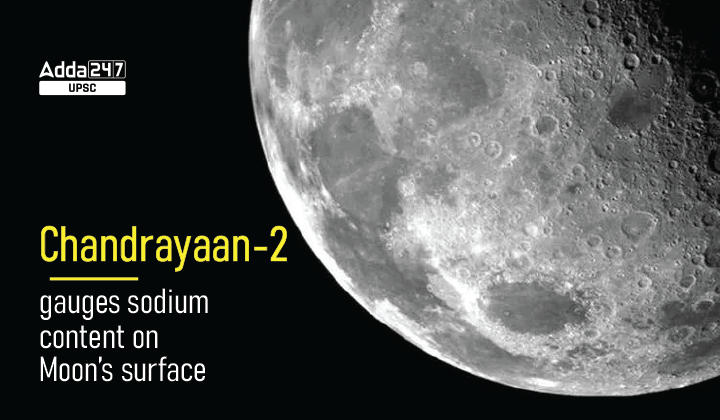Table of Contents
Chandrayaan-2 gauges sodium content on Moon’s surface: Relevance for UPSC Exam
General Studies III- Achievements of Indians in S&T
Chandrayaan-2 gauges sodium content on Moon’s surface: Context
Scientists from ISRO have mapped out the global distribution of sodium on the Moon’s surface using the CLASS instrument (Chandrayaan-2 large area soft X-ray spectrometer) onboard of the Chandrayaan-2 mission.
This is the first effort to provide a global-scale measurement of sodium on the lunar surface using X-ray fluorescent spectra.
Chandrayaan-2
- Chandrayaan-2 consisted of an Orbiter, Lander and Rover, all equipped with scientific instruments to study the moon.
- The Orbiter would watch the moon from a 100-km orbit, while the Lander and Rover modules were to be separated to make a soft landing on the moon’s surface.
- ISRO had named the Lander module as Vikram, after Vikram Sarabhai, the pioneer of India’s space programme, and the Rover module as Pragyaan, meaning wisdom.
- The Orbiter part of the mission has been functioning normally. It is carrying eight instruments.
- Each of these instruments has produced a handsome amount of data that sheds new light on the moon and offers insights that could be used in further exploration.
X-Ray Fluorescence
- It is commonly used to study the composition of materials in a non-destructive manner.
- When the sun gives out solar flares, a large amount of X-ray radiation falls on the moon, triggering X-ray fluorescence.
- The CLASS measures the energy of the X-ray photons coming from the moon and counts the total number.
- The energy of the photons indicates the atom (for instance, sodium atoms emit X-ray photons of 1.04 keV) and the intensity is a measure of how many atoms are present.
Presence of Sodium on Moon: Significance
- Sodium can be used as a tracer of the volatile history of the moon.
- When compared to Earth, the moon is significantly depleted of volatile elements such as sodium.
- The amount of volatiles on the moon today can be used to test formation scenarios of the Earth-Moon system.




 TSPSC Group 1 Question Paper 2024, Downl...
TSPSC Group 1 Question Paper 2024, Downl...
 TSPSC Group 1 Answer key 2024 Out, Downl...
TSPSC Group 1 Answer key 2024 Out, Downl...
 UPSC Prelims 2024 Question Paper, Downlo...
UPSC Prelims 2024 Question Paper, Downlo...
